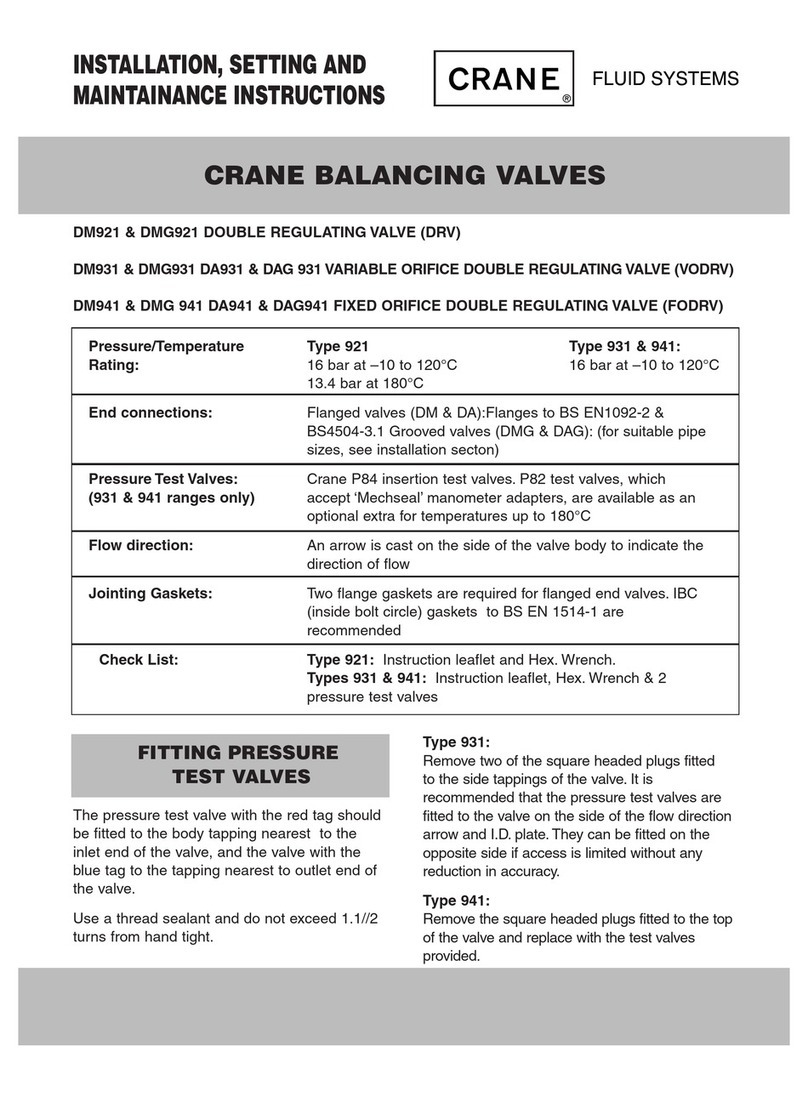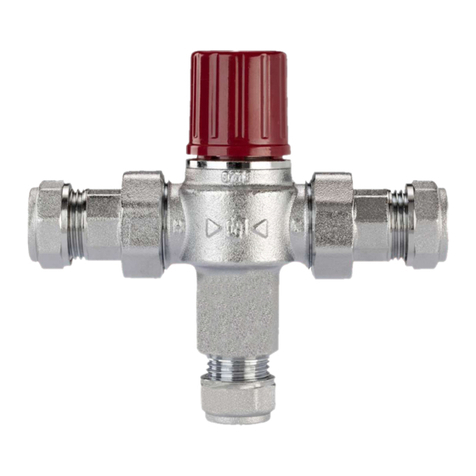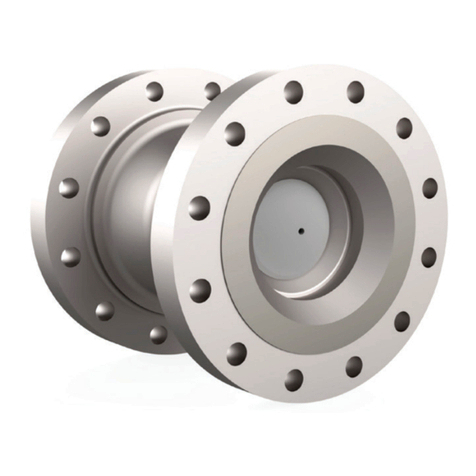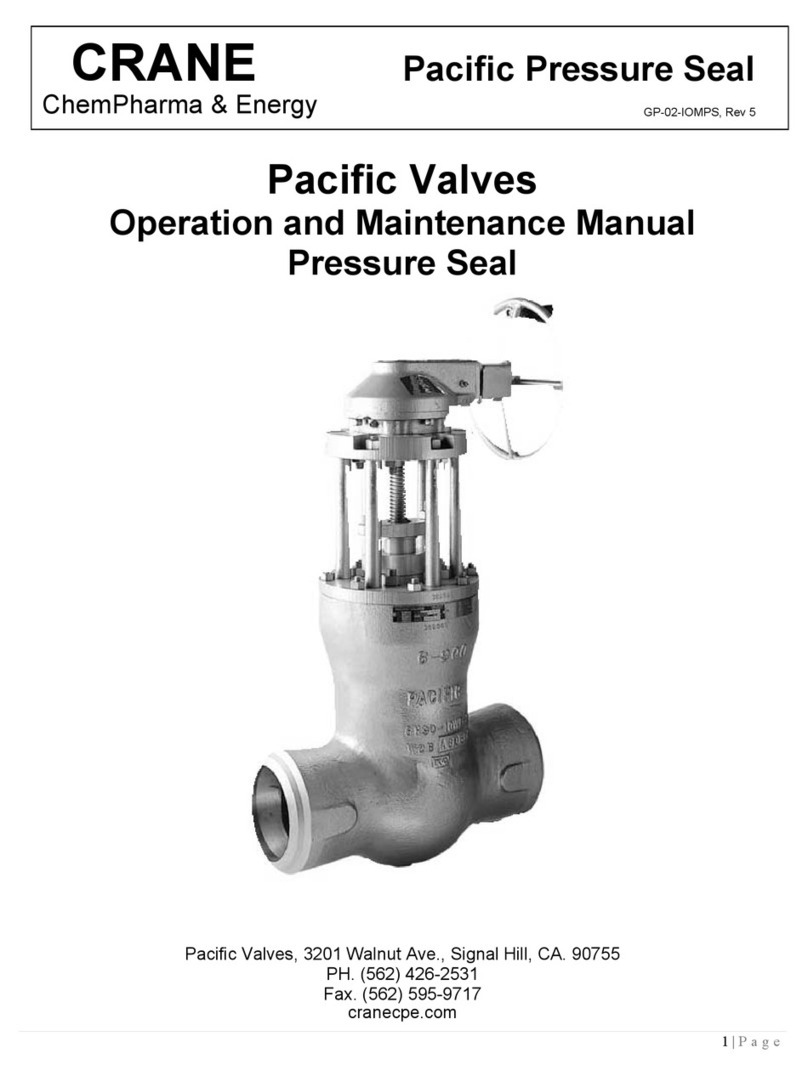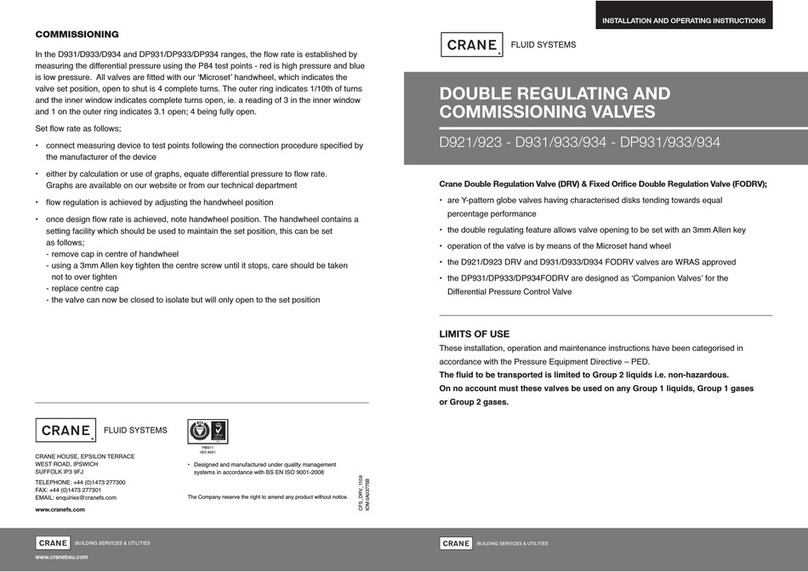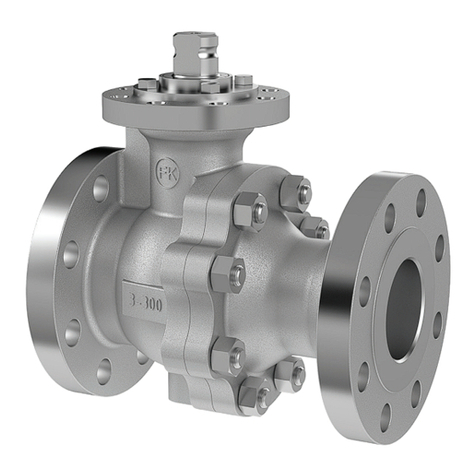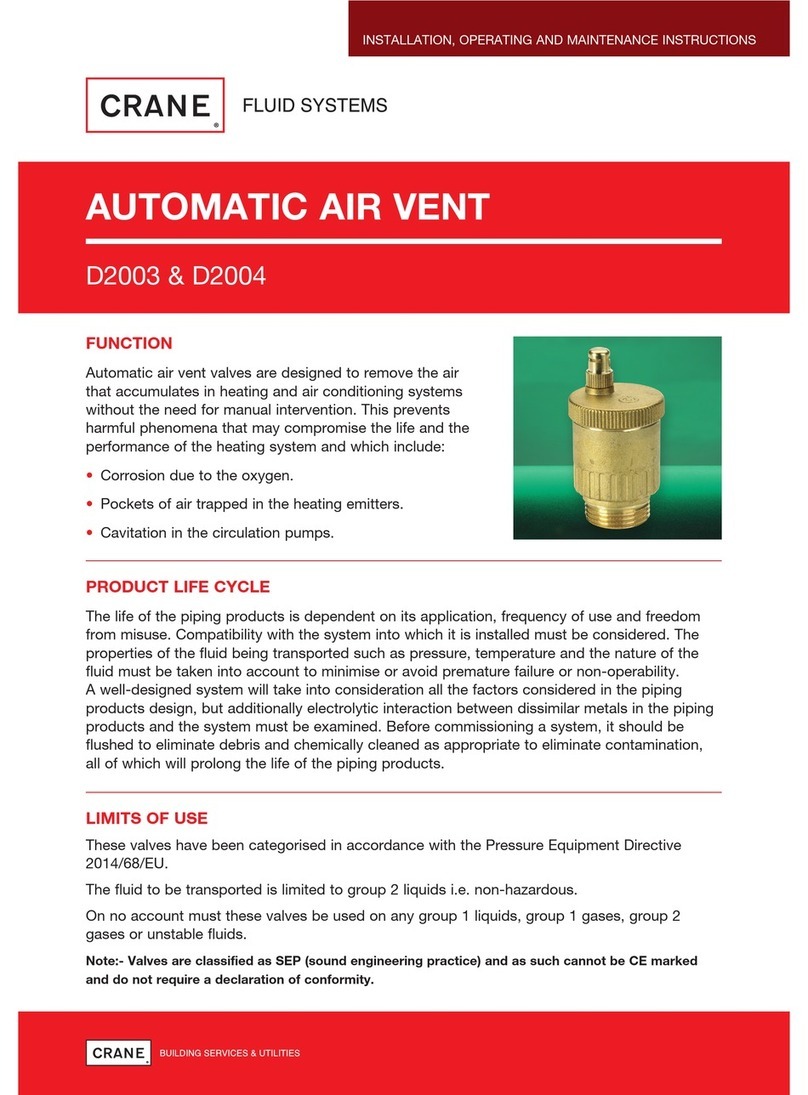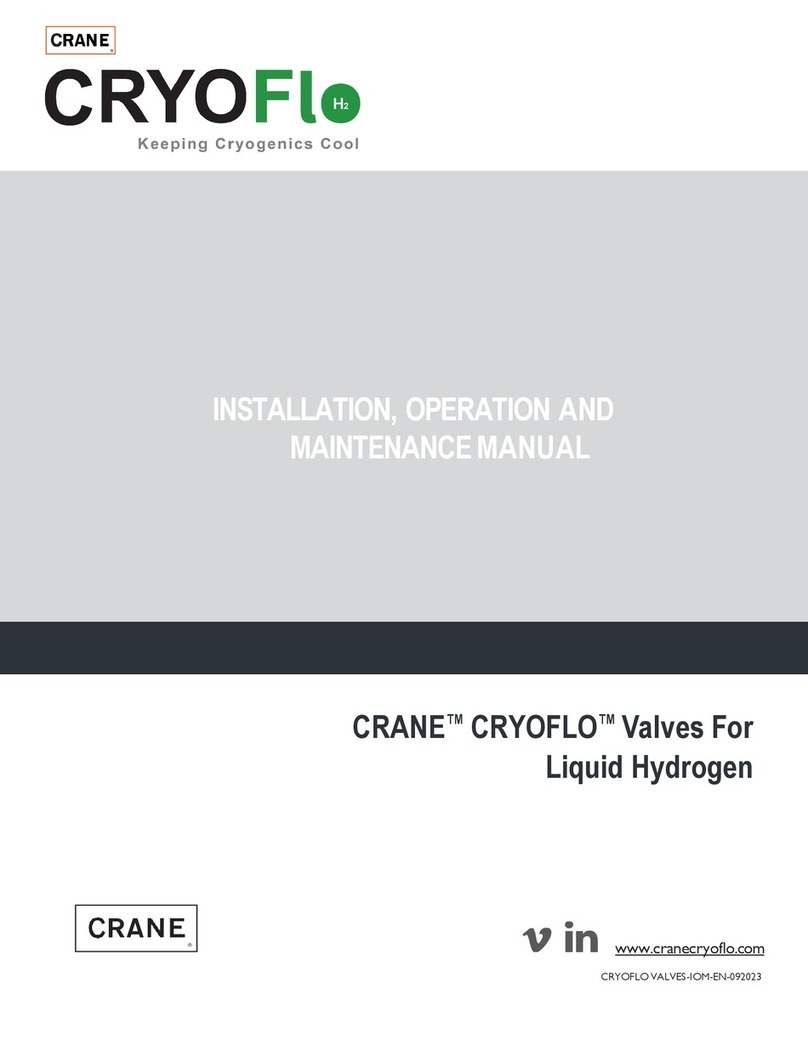COMMISIONING
Since the installed supply conditions are likely to be different from those
applied in the laboratory tests, it is appropriate, at commissioning, to
carry out some simple checks and tests on each mixing valve to provide
a performance reference point for future in-service tests.
Follow this method for adjusting the water temperature:
1. Remove the maroon plastic protective cap on top of the valve.
2. Back-out the nut, using a hexagon key:
-To increase the temperature turn anti-clockwise
-To decrease the temperature turn clockwise
-To set the valve to a maximum mixed water temperature in
accordance with the valve application (See Table 3).
3. When the valve has been installed following the correct conditions of
use, it is advised that the valve is then subjected to exercise prior to
the commissioning at the application temperature. Operate the valve
from full cold to full hot at least three times.
4. With the valve at the full cold position bring the valve to the correct
temperature. If the valve overshoots this, return the valve to the full
cold and reset.
5. After adjustment replace the cap to lock the valve in position and
prevent tampering.
Commissioning Test Sequence
a. Carry out the following commissioning test sequence:
i. Record the temperature of the hot and cold water supplies adjacent to the TMV. Record
the pressures of the hot and cold water supplies at the inlets of the TMV. Note: if this
measurement is not possible at the inlets to the TMV and is taken elsewhere, then the
pressures at the TMV will be lower than the measured values.
ii. For all outlets, measure the temperature of the mixed water at the maximum available flow
and record.
iii. Isolate the cold water supply to the mixing valve and observe the mixed water outlet.
b. For TMV2: If there is a residual flow during the commissioning or the annual verification (cold
water supply isolation test), then this is acceptable providing the temperature of the water
seeping from the valve is no more than 2°C above the designated maximum mixed water
outlet temperature setting of the valve.
For TMV3: If there is a flow stream after 5 s then collect any water discharging into a suitably
graduated measuring vessel for 60 seconds if the volume of water collected is greater than
120ml then further investigation is needed.
c. Restore the cold water supply, after 15 seconds record the mixed water temperature.
d. Verify that this temperature does not differ from the temperature taken in a) ii. above by 2°C,
(this is a restoration test after a failure of the cold water supply and some deviation of the
mixed water outlet temperature may be expected).
Figure 1 - D1088 pictured,
cap removal
Figure 2 - D1088 pictured,
temperature setting
Nut
Maroon plastic
protective cap
INSTALLATION, OPERATING AND MAINTENANCE INSTRUCTIONS
THERMOSTATIC MIXING VALVES: D1088 & D1089
3

